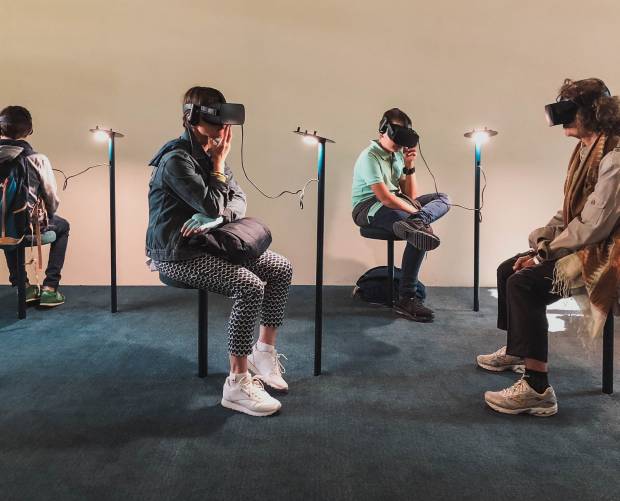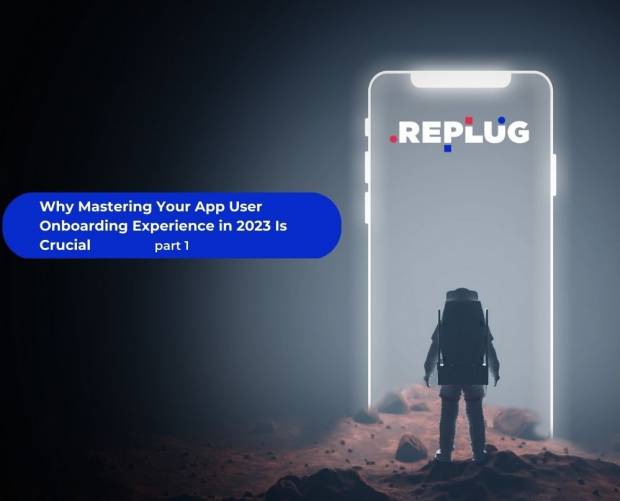Looking back on 10 years of mobile with our Agency of the Decade contenders
Voting is currently underway for the Most Effective Agency of the Decade Awards, one of three special awards to celebrate the 10th anniversary of the Effective Mobile Marketing Awards. We are also accepting votes for the Most Effective Brand of the Decade and for the Disruptor of the Decade. You can cast your vote here.
Voting closes at 5pm UK time this coming Friday, 4 October.
We asked the leaders of the four agencies shortlisted for the Agency of the Decade Award to give us their thoughts on how the mobile marketing landscape has evolved over the past 10 years. Here’s what they had to say…
Adam Croxen, managing director, Future Platforms With more than 5bn unique mobile users around the world, it’s safe to say that we are living in a mobile-first world. Over the last decade, mobile has transformed into an omnipresent utility tool that entertains, informs, connects, and assists us in completing numerous jobs, from ordering pizza to catching a cab.
With more than 5bn unique mobile users around the world, it’s safe to say that we are living in a mobile-first world. Over the last decade, mobile has transformed into an omnipresent utility tool that entertains, informs, connects, and assists us in completing numerous jobs, from ordering pizza to catching a cab.
For a business to provide a successful mobile experience, it’s no longer acceptable simply to provide a responsive website that works on mobile. Users now expect enterprises to devote time, money, and thought to offer compelling, dedicated mobile apps to support their customers.
The last 10 years have seen mobile progress from self-service to self-control, and now toward the AI-driven goal of automation of the mobile experience. Self-service involves the most user interaction, whereby a user is required to search and make selections for themself. Self-control is a step beyond this, as the user is presented with pre-selected options based on data and personalisation to pick the best choice. AI goes even further, by anticipating the needs of a user and completing tasks or offering recommendations, or even making the choice for them.
In the last decade, the meteoric rise of digital-first businesses like AirBnB, Spotify, and Uber, which have been powered by digital innovation, have provided more personalised mobile services that are often uniquely tailored to their users.
In response to this, analogue businesses have struggled to adapt, and to realise that in order to compete in digital, let alone mobile, they need to challenge their existing way of doing business. Like the web before it, these businesses initially saw mobile as a marketing channel (where they would utilise it to increase brand awareness, or provide offers and additional information), not a channel to deliver and enhance how they service and support their customers. In the last decade, however, traditional enterprises have evolved their mobile strategy, starting to use it more as a utility tool, first by digitising existing services and then developing new offerings based on the opportunities mobile offers. The disrupted started to disrupt themselves.
Domino’s Pizza, for example, has gone from being a phone-based pizza delivery business to an mCommerce market leader. First, the pizza giant digitised its existing ordering process, then enhanced it over time and invested heavily in mobile. Domino’s has continued to work on its digital customer service offering by redesigning its existing consumer app and adding a driver tracking option, with real-time data feeds which provide improved transparency over pizza deliveries for both the business and the customer. Its amazing 280 per cent increase in revenue over the last 10 years has been fuelled by digital (and some pretty good pizza) but more importantly, by Domino’s continual focus on the user needs.
User-centric design has been talked about for years, but has intensified over the last ten, as mobile users expect more and more from service providers. Here, the focus has deepened as a result of the push toward automation and seamless user experiences.
Services are attempting to not only deliver to users’ needs and expectations, but to anticipate them and deliver them before users even open the app. These improvements are shifting mobile toward a zero user interface (UI) approach. Traditionally, users would need to open their phone, go to the app and navigate through it to complete a task or find information. Through zero UI, however, the need for all this interaction is reduced or removed as mobile becomes smarter and more integrated with each individual user’s needs and habits over time. This results in personalised home screens, notifications, and lock screen messages, which anticipate a user’s needs. Voice assistants, like Siri and Google Assistant, also play an important role in reducing direct interactions with our mobile devices.
Over the last decade, mobile has undergone a journey from self-service, through to self-control, and, increasingly, a move toward automation. This has been driven by technology and an increased focus on user needs. The result, when successful, is mobile strategies that improve efficiency for businesses and customers, increasing engagement and loyalty, and collecting data and insight to inform the future evolutions of services and even businesses.
James Hilton (r), founder and chairman, and Christian Gladwell (l), CEO, M&C Saatchi Performance James Hilton:
James Hilton:
Looking back, the late noughties were a Groundhog Day of sorts, where marketers were out of sync with consumers who were rapidly embracing mobile technology.
I launched my business in 2006 out of real frustration. At the time, I was watching the same trends develop with mobile as they had done with the fixed line internet and yet few marketers were taking the potential seriously.
I travelled the world having the same conversation where I persuaded brands that the possibilities would be unlike anything we’d seen before. I could see that mobile advertising would be as, or more, successful than desktop advertising. Rather than targeting a household via only one PC, brands could reach the individual, communicating more effectively than ever before.
In 2007, the mobile revolution began with the launch of the first iPhone, bringing an accessible device to the masses. With more computer power than the first Apollo rocket that reached the moon, paired with the simplicity, so no need for an instruction manual, the iPhone changed what was possible for a handset and was indeed the first true Smartphone. Apple sold 1.4m iPhones in its first year, rising to staggering 11.6m in 2008. Marketers were finally able to launch campaigns globally at scale. Ironically despite all these advancements brands still needed convincing.
Mobile has revolutionised how we live our lives, from the convenience of location apps, to the variety of messaging and social platforms. However, it took five years from the launch of the iPhone for the year of mobile to come to fruition. In 2012, brands started taking mobile engagement seriously, and an influx of investment hit the ecosystem as substantial media budgets were allocated to mobile campaigns. Partially driven by Facebook, who began offering mobile ads in 2012, providing access to previously unknown consumer insight: location, interests, and demographics. As alpha partners, we ensured our clients were one of the first to advertise on Facebook.
We’ve come a long way from mobile advertising being an afterthought of the ad industry – a platform that never seemed to come of age, with each year touted as the year of mobile. Investment has steadily grown year-on-year and now the majority (51 per cent) of digital ad growth is thanks to smartphone advertising, which totalled £6.85bn in the UK last year.
To mark the end of my decade in mobile, I stepped into the chairman role at M&C Saatchi Performance and appointed a new global CEO to lead the business into the next 10 years. Christian Gladwell has played a pivotal role in the global digital industry and shares my fundamental belief that mobile is more than a device. Here he explains why the advertising industry will have to change how it approaches attribution in the coming years:
Mobile is more than simply the device. Mobile is a human behaviour – it’s our portal to 24/7 connectivity. The shift is noticeable; governments are investing in 5G and the list of connected devices grows longer, from fridges to washing machines, home security to smart meters, all monitored via a smartphone. Next up is wearable tech. While Google Glass didn’t take off, Apple’s watch offering is providing consumers with an alternative hands-free option. Fast-forward 10 years and we’ll not only have connected homes and apparel, but the revolution will have reached our cars. It won't be long before brands are personalising ads to be served on the move, thanks to increased consumer dwell time in autonomous vehicles.
The focus, as it’s always been, is the consumer. The consumer is mobile and they expect the brands they interact with to innovate and meet their demands.
As mobile reaches new heights, innovation won’t be without its challenges. While everyone is focused on GDPR’s impact on data privacy or the fact that where the money goes, fraudsters follow, a conversation that needs to have a greater focus is attribution.
In an increasingly connected world, knowing how these new platforms impact consumer behaviour will be the key to success. Joining the dots between all digital platforms – from connected TV to digital out-of-home (DOOH) – is only one part of the puzzle, as those touchpoints are not all equal and the data is not all the same. Only through education and informed discussions can marketers work to build an effective probability model that connects the entire marketing funnel.
Attribution is the beating heart of a savvy marketer, so as we look forward to the next 10 years, we must move away from mobile as a device. Instead, the connected attribution discussion must be elevated to ensure the value exchange is the very best it can be for both brands and consumers.
Jason Palgrave-Jones, managing director, Textlocal Mobile technology has evolved far beyond its origins – even some of the first smartphones would seem obsolete by modern standards. Today, our smartphones and devices help us to organise each day, remind us of key tasks and in the case of wearable fitness accessories, they even remind us to breathe or take a walk.
Mobile technology has evolved far beyond its origins – even some of the first smartphones would seem obsolete by modern standards. Today, our smartphones and devices help us to organise each day, remind us of key tasks and in the case of wearable fitness accessories, they even remind us to breathe or take a walk.
However far we might take this technology, at its core will always be communication. The channels and messaging platforms may continue to diversify and change, but we will always rely on our mobile devices to connect us with both individuals and businesses.
In much the same way, Textlocal has also transformed over the last 10 years to support the evolving technologies and needs of the modern mobile consumer.
Connecting businesses with their customers has always been the focus for our business and much like the origins of mobile technology, communications will always be the centre of what we do.
Driven by changes within the industry, we continue to develop our solutions, which have evolved from a single self-serve SMS platform to a suite of products which encompass key digital messaging channels and automation solutions.
Technology continues to develop at pace. Over the last five years alone, we have seen better networks, better devices and better software architectures. Ultimately, businesses are now communicating with customers in a more personalised, and contextual way. However, it’s really only just started. If you look at the dramatic change in the last five years to the ease with which we all communicate with each other and our friends and family, this will translate into how we communicate with businesses.
As a result, being where your customers are is a crucial part of meeting the expectations of mobile-first consumers. I believe it is this that sits at the heart of the changes we’ve seen across mobile technology as well as our business. The way customers now engage with each other and their chosen brands has entirely altered.
Mobile technology is able to connect businesses and service users like never before; customers can raise issues in real-time across several channels and platforms. It is this anytime, anywhere mentality that has given rise to a shift in how and through which channels we communicate with our customers.
Today’s consumers actively seek out digital channels to deliver the instant resolution and engagement they expect. Businesses are now expected to offer the same level of convenience and speed that their customers enjoy in their personal digital interactions. Channels that were once exclusively for personal use, such as social media or instant messaging, are now being utilised by both businesses and consumers. These changes have created a more customer-centric experience, all delivered through digital messaging. Businesses who have adopted this multichannel approach have also recorded higher customer satisfaction and revenue. It’s clear that as mobile technology continues to evolve, so too do the needs and expectations of our customers.
Over the next year, we will see the introduction of new interaction channels for businesses to communicate with customers, such as Apple Business Chat, Google RCS messaging and WhatsApp Business. These new interaction channels allow companies to have more meaningful relationships with their customers. We also see new technology and better networks combining to allow for video to become a more popular customer interaction medium that businesses will want to use for certain use cases.
Mick Rigby, CEO, Yodel Mobile We launched as a mobile marketing agency in 2007, and have seen the whole mobile sector evolve, right from the Big Bang of the iPhone launch through to today’s universe of stability revolving around the two suns of Android and Apple.
We launched as a mobile marketing agency in 2007, and have seen the whole mobile sector evolve, right from the Big Bang of the iPhone launch through to today’s universe of stability revolving around the two suns of Android and Apple.
Over the last 10 years there were a handful of changes that had seismic impact on mobile and created new economies and fundamentally transformed how businesses and marketers reacted to this brave new world.
The first was the App Store on the iPhone, closely followed by Android Market. Prior to the launch of the App Store there wasn’t an app economy of any real influence. The App Store allowed for services and “tools” to be easily found in a managed marketplace and then downloaded to the individual’s device to be carried around and fired up when they were needed. The fact that all these apps, built natively, could be easily found, downloaded and very simply monetised, pretty much overnight created a new industry. It changed Yodel Mobile: we moved from being a mobile agency into an app marketing business; this economy needed app marketing specialists who could provide experienced support. That was the turning point where a greater demand for the growth service we provided flourished.
Nascent app attribution tracking became available about three years later. This allowed independent verifiable tracking of ad clicks to downloads. This was revolutionary at the time, especially prior to the first clunky, attribution tools that were launched in the app marketing community. They relied on the ad networks’ analytics and self-policing in the hugely lucrative sector wasn’t a good idea.
With greater emphasis on accountability, the mobile download infrastructure started to evolve rapidly. There was a surge in growth of app install networks, retargeting networks, video and incentivised app install solutions. Topped off with the launch of Facebook app install campaigns and the growth of Google Universal App Campaigns and Apple Search Ads, acquisition infrastructure was finally in place.
The biggest change over all this time though, was the consumer. Mobile and apps specifically started to change the way that people interacted with the web, mobile data and how they accessed information. As the app marketplace grew, app users evolved from the early days of downloading everything, into a more sophisticated and demanding group of users. Our expectations have grown – the apps we use have to solve a problem, be intuitive, look good and most importantly, work. In short, we expect more and are very quick to delete or stop using an app that doesn’t hit the mark. In the UK we are downloading, on average, less than one app a month.
The retention pandemic still instils fear in app owners, as most apps lose 80 per cent of their users within 90 days of downloading. To counter this trend, the app economy has to move away from a download economy to an engagement and retention economy. It is harder than ever to retain a user and therefore the importance of user engagement right from a user’s initial interaction with an app must be the main focus for every app business. If you can’t retain the majority of your downloaders, then you don’t have a business. Instead, you will rely more and more on paid advertising and increasingly expensive user acquisition solutions to keep the app populated. Such a strategy is not sustainable.
App owners, agencies and marketers need to be aware of this issue, and furthermore, they need to prioritise the strategic requirement of building a relationship with an app’s users, which is at the heart of any viable app business.
So, this gets us to the present day, and with the growing importance of data and of engagement tools baked into a solid but evolving app success strategy. The best app growth experts have evolved into people who can use harness data, pull out the relevant insights and utilise in-app tools to build ongoing engagement strategies. This, I believe, is where we currently are.
It’s still an incredibly exciting industry to be in, and I for one can’t wait to see where the sector moves to in the next few years.
To cast your vote for the Most Effective Agency of the Decade, Most Effective Brand of the Decade and Disruptor of the Decade, click here.
Voting closes at 5pm UK time this coming Friday, 4 October.





